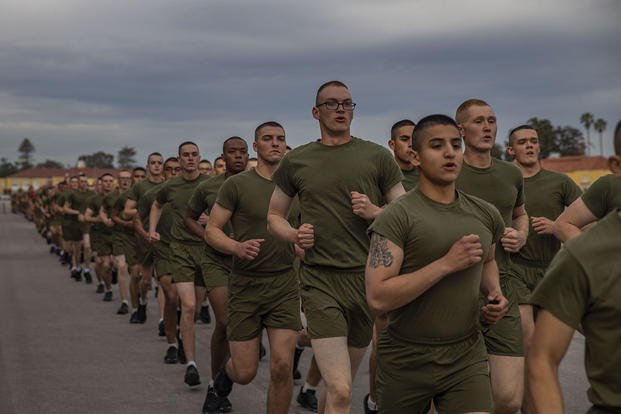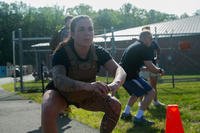"Hi Stew, I am now suffering from shin splints every time I go running. It does not matter if I lay off running for a period of time or if I start out running shorter distances. What can I do to get myself back into long distance running?"
If the typical treatment of shin splints does not work for you, it is time to see a doctor. The following usually will help treat your symptoms:
-
Some time off from running (1-2 weeks)
-
New running shoes
-
A proper stretch or flex of shins prior to and after running
-
A week of over-the-counter, anti-inflammatory medication and/or ice
However, if doing the above and going to www.drpribut.com (the Running Doctor website) does not help you, it is time to see a doctor in person. It could be something different but fairly common in runners of all ages.
Typically, in military and law enforcement training running programs, people do too much, too soon and too fast. People preparing for a fitness test sometimes will forgo the proper amount of time to build a foundation, and the extreme increase in activity level will cause compartment syndrome.
Chronic compartment syndrome results from repetitive trauma and overuse. The following are possible causes:
-
Running, especially on hard surfaces in boots or with poor shoe inserts
-
Repetitive stress from running and rucking, impacting the shin area
Some symptoms of compartment syndrome are swelling in the lower legs, pain and numbness and can result in permanent nerve damage.
Here is the Reader's Digest version of the symptoms and treatment from another reader who had compartment syndrome and thought he had shin splints:
I had pain in the lower legs when running. It only induced if I ran faster than a 9 min/mile, and the onset of the pain was directly proportional to how much faster than 9 min/mile I ran. If I kept running after the onset of the pain (i.e., tried to run through it), the muscles would seize and I'd be unable to flex my foot ... creating a "slapping" sound when the foot strikes the ground. This is a big indicator that it is not shin splints.
The seized muscles would release, and the acute pain/swelling would cease within an hour after I finished running. (If I'd had shin splints before, I'd have known that shin splint pain doesn't just go away). The residual pain would go away within 24 hours; thus, I was running every other day. Compartment syndrome is basically when the fascia surrounding the muscle in question no longer expands to allow it to expand during exercise. With nowhere to expand, the blood flooding the exercised muscle puts pressure on the blood vessels and nerves, causing the above symptoms.
After being diagnosed, I asked the doctor, "What if I just run 9 min/miles for the rest of my life?" The doc said that the symptoms would induce at a slower and slower threshold, and eventually it would not release, and I could lose portions of the muscle or the lower leg. He then instructed me to stop running until after surgery.
There\'s no known reason for ECS (exertional compartment syndrome). I thought it might be a function of my age, 45, but my surgeon does work with the Ohio State football team and says that he does about 3 surgeries on Buckeye football players in their late teens/early 20s every year). The test for CS was actually more painful than the surgery. The surgery was fairly simple. They slit my lower legs and cut the fascia around the lower compartments, then went under the skin and cut the fascia around the upper compartments.
That is why when people ask about running through the pain and sucking up shin splints, it is always best to think before you run again. It could be something an easy warmup stretch will help, but then again it could be something that requires surgery. If you are having some of the CS symptoms above, you should consider not running and seeing a doctor.
Stew Smith is a former Navy SEAL and fitness author certified as a Strength and Conditioning Specialist (CSCS) with the National Strength and Conditioning Association. Visit his Fitness eBook store if you're looking to start a workout program to create a healthy lifestyle. Send your fitness questions to stew@stewsmith.com.
Want to Learn More About Military Life?
Whether you're thinking of joining the military, looking for fitness and basic training tips, or keeping up with military life and benefits, Military.com has you covered. Subscribe to Military.com to have military news, updates and resources delivered directly to your inbox.




















